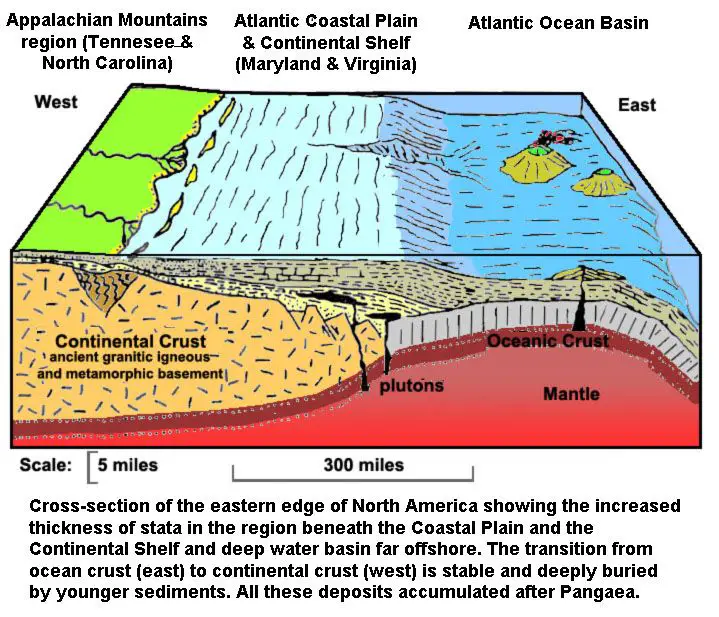What Type Of Mineral Is The Clay Of Georgia Red Clay?
Clay is a fine-grained natural rock or soil material that is made up of a group of hydrous aluminum phyllosilicate minerals known as clay minerals. Clays form when the feldspar and mica found in rocks breaks down through weathering. They are composed mainly of silica, alumina, and water, but also contain smaller amounts of other elements like potassium, sodium, calcium, magnesium, and iron.
Georgia red clay refers specifically to the red clay found in the Piedmont region of the U.S. state of Georgia. This clay gets its distinctive red color from the presence of iron oxides. Georgia red clay has been used for centuries by Native Americans and early settlers for making pottery and bricks. Today it is still prized for its versatility and rich red-orange hues.
Geological Origins
Georgia red clay formed over millions of years due to the breakdown of feldspar-rich metamorphic and igneous rocks. It originated from the Piedmont and Blue Ridge physiographic provinces in Georgia, where the parent rock minerals were weathered and transported downhill towards the coastal plain. This produced deposits of red and iron-rich sandy clay sediments across central and southern Georgia.
During the Cretaceous and Tertiary periods between 145 and 2.6 million years ago, Georgia’s landscape was shaped by cycles of marine transgressions and regressions. The weathering of the ancient crystalline rocks created a mineral-rich clay material that accumulated in the Coastal Plain seabed. When sea levels later dropped, these Coastal Plain sediments were exposed at the surface as red clay soils.
Repeated glacier advances also transported and redeposited the clay. Over time, the red clay soils were leached of minerals and organic matter, leaving behind the characteristically red, alkaline, and nutrient-poor soil that is endemic to Georgia today. The mineralogy and chemistry of the clay is due to this long and complex geological history.
Mineral Composition
Georgia red clay is primarily composed of kaolinite, with smaller amounts of illite, montmorillonite, and quartz. The reddish color comes from iron oxide coatings on the clay particles.
Kaolinite is the dominant mineral, making up 50-95% of Georgia red clay deposits. Kaolinite is a clay mineral with a 1:1 ratio of silica tetrahedrons to alumina octahedrons. It forms very small stacked sheets that give Georgia red clay its distinctive fine texture.
Illite and montmorillonite are also clay minerals and make up around 10-40% of the composition. They have similar sheet structures as kaolinite but with some differences in their molecular makeup. The presence of these minerals influences the plasticity and cohesiveness of the clay.
Small amounts of quartz, between 1-5%, are also found in Georgia red clay. Quartz is a common mineral composed of crystalline silica. The quartz particles help provide structure to the clay.
The specific percentages of the minerals can vary across different deposits of Georgia red clay. But kaolinite overwhelmingly dominates the mineral composition and gives the clay its unique properties.
Chemical Properties
Georgia red clay gets its distinctive color and properties from its chemical composition. The red hue comes from iron oxide, which makes up a significant portion of the clay. Iron oxide not only gives red clay its color, but also influences other important properties.
In addition to iron oxide, the clay contains other metal oxides like aluminum and magnesium oxides as well as silica. The precise ratios of these chemical components can vary, accounting for subtle differences between clay deposits. However, Georgia red clay typically contains about 45-55% silica, 15-25% alumina, 6-10% iron oxide, and trace amounts of other oxides.
The mineralogy of the clay is also important. Georgia red clay consists primarily of kaolinite, a soft white mineral that forms thin, flat hexagonal sheets. When iron oxide is present, it coats the kaolinite sheets and causes the red hue. The chemical structure of kaolinite and particle size affect clay properties like plasticity, cohesion, and cation exchange capacity.
The precise chemical composition and mineralogy enable Georgia red clay to provide nutrients to plants, maintain moisture and aeration in soil, and give pottery and bricks their unique physical characteristics. The chemistry of this clay makes it both aesthetically pleasing and functionally versatile.
Physical Properties
Georgia red clay has some unique physical properties that set it apart from other types of clay soils. Here are some of the key physical characteristics:
Color – As the name implies, Georgia red clay has a distinctive red color. This reddish hue comes from the high iron oxide content in the soil.
Texture – The clay particles that make up Georgia red clay are very fine in texture, almost powdery. However, the soil feels smooth to the touch when wet and becomes hard and dense when dry.
Plasticity – Georgia red clay has high plasticity, meaning it can be molded when wet while retaining its shape when dry. This makes it excellent for pottery and ceramic work.
Stickiness – The clay becomes extremely sticky and muddy when wet. When saturated with water, Georgia red clay develops a gluey, adhesive consistency.
Cracking – As the clay dries out, it shrinks and cracks deeply. The shrink-swell capacity leads to shifting foundations and cracked walls and floors in buildings.
Density – Georgia red clay packs very densely, leading to poor drainage and making it difficult for plant roots to penetrate.
Uses
Georgia red clay has many important uses and applications thanks to its unique properties. The rich iron oxide content gives the clay its distinctive red color and also provides beneficial traits like high plasticity and high dry strength.
Some of the main uses of Georgia red clay include:
-
Pottery – The clay is ideal for making pottery due to its excellent workability and firing qualities. It has been used for centuries by local potters and artists.
-
Brick manufacturing – Georgia red clay’s high iron content allows bricks made from it to meet strength and durability specifications. Modern brick plants in the state continue to utilize the native clay deposits.
-
Sporting surfaces – The clay is used to make the distinctive tennis courts at the French Open tournament. It provides a stable, uniform surface with the right amount of slide and bounce. Local baseball fields also use the clay for the infield dirt.
-
Cosmetics – The clay has absorbent properties that make it useful as an ingredient in some soaps and facial masks. It also adds a vivid red tint.
-
Construction – As a locally available material, the clay has long been used in construction applications like making adobe bricks and adding it to mortar mixes.
Georgia red clay’s unique composition gives it durability, plasticity, and rich color that make it well-suited for these practical uses that are deeply rooted in the state’s history and culture.
Agricultural Significance
Georgia red clay plays an essential role in the state’s agriculture and farming. The rich iron oxide content gives the soil a distinctive red color and provides nutrients that are beneficial for plant growth. When mixed with other soils and organic matter, the clay helps retain moisture and nutrients for crop production.
Throughout Georgia’s history, the red clay soil has been utilized for growing several staple crops such as cotton, peanuts, and soybeans. The soil drains well while maintaining moisture for these crops. The smooth and consistent texture also makes it suitable for tilling and planting equipment. Additionally, the clay is not too acidic, allowing crops to thrive.
While the hard clay can be difficult to work for farmers, adding compost or other soil amendments helps improve texture and nutrient balance. Overall, Georgia red clay has shaped the state’s agriculture for centuries and remains an ideal soil for many crops with proper amendments and practices.
Environmental Effects
Georgia’s iconic red clay soil has both positive and negative impacts on the local environment. On the positive side, the clay is rich in nutrients like iron, potassium, and calcium, which helps plants grow. The red color comes from iron oxide, which gives the soil important trace minerals. However, the clay soil also has some drawbacks environmentally.
A key issue is that clay does not drain well. Rainwater can collect and cause flooding, erosion, and runoff problems. The dense clay prevents proper drainage down into the water table, leading to pooling. This is problematic for both natural ecosystems and agriculture. Wet clay soil lacks oxygen that plant roots need to thrive. The poor drainage also exacerbates drought conditions when rain is scarce.
Additionally, the fine clay particles themselves represent a contamination risk when sediment runs off into local waterways. Georgia’s red clay has been identified as a source of sediment buildup, increasing the turbidity and mineral content of streams, lakes, and estuaries. This runoff can harm water quality and aquatic life. Careful land management is required to prevent excessive erosion.
On balance, while aesthetically striking, Georgia’s red clay poses environmental trade-offs that must be managed for sustainability. With careful stewardship of the land, the benefits of this iconic soil can outweigh the drawbacks.
Cultural Significance
The distinct red hue of Georgia’s clay soil holds a special place in the state’s culture and identity. Named the official state soil in 2015, Georgia red clay is an iconic symbol of the region’s geography and agricultural heritage. Many Georgians feel a sense of pride and belonging linked to the ubiquitous red dirt.
In the arts, Georgia red clay has been featured prominently across various mediums. The novel Gone with the Wind describes the red earth of Tara plantation. Folk songs such as “Georgia Red Clay” and “Red Clay Hills” celebrate the soil’s natural beauty. Contemporary artists use the vivid pigment as a medium.
The connection between Georgian culture and red clay goes beyond the symbolic. Generations of Southern farmers and gardeners have cultivated the distinctive soil. Traditional practices and knowledge exist around effectively working the dirt. Georgia red clay is part of both the regional landscape and way of life.
Conclusion
Georgia red clay, the state soil of Georgia, plays an important role in the geological, agricultural, environmental and cultural heritage of the state. Though simply clay on the surface, it has a complex mineral composition that gives it a distinctive deep red color. This unique clay has many uses, from producing bricks and pottery to enriching farmland. However, its iron oxide content also leads to environmental concerns related to runoff. On balance, Georgia red clay remains an iconic part of the state’s identity and a valuable natural resource.
In summary, the rich red clay found across Georgia derives from the chemical weathering of crystalline rock and subsequent deposition over eons. While mainly composed of kaolinite clay, it also contains iron oxides that give it a vivid red hue. The characteristics of Georgia red clay have long made it ideal for pottery and brick-making. Its presence across the state also plays a key role in agriculture. However, the high iron content contributes to environmental issues that must be carefully managed. Beyond its practical uses, Georgia red clay is deeply intertwined with the state’s culture and sense of pride. Protecting this unique state soil remains an important priority.


